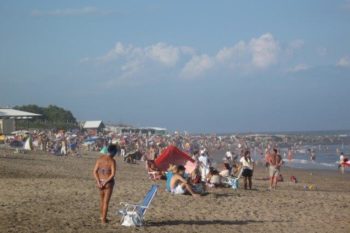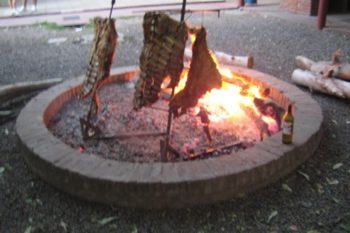Have you ever heard of Quebrada de Humahuaca? This magical place high up in the Andes has been inhabited for the last ten thousand years, where traces of pre-Hispanic civilizations and their culture can still be seen today. Also, this mountain valley located in the province of Jujuy in northwest Argentina is the tail end of the famous Inca Trail (Camino del Inca). It was part of a major trade route used from prehistoric hunter-gatherers to traders and officials of the Inca Empire to modern-day tourists.
 Quebrada de Humahuaca was declared a UNESCO World Heritage Site in 2003 because, among other things, it has been “a crucial passage for the transport of people and ideas from the high Andean lands to the plains.” According to UNESCO, the place’s “distinctive pre-Hispanic and pre-Incan settlements” form a dramatic addition to the landscape.
Quebrada de Humahuaca was declared a UNESCO World Heritage Site in 2003 because, among other things, it has been “a crucial passage for the transport of people and ideas from the high Andean lands to the plains.” According to UNESCO, the place’s “distinctive pre-Hispanic and pre-Incan settlements” form a dramatic addition to the landscape.
The landscape is impressive. The word “quebrada” means deep valley or ravine. It’s famous for its multicolour mountains: each colour is the result of a different layer of sediments deposited over the last 600 million years. Successive tectonic plate movements gave them the shapes we see today.
The local fauna includes the mythic condor and eagles soaring above the peaks and vicuñas and guanacos grazing on the rocky slopes. The vegetation is scarcer the higher up and further north you go.

Credit: Veronica San Martin @ Turismo Jujuy
Ancient celebrations and rituals are kept alive today. The Carnival is the biggest and most popular of all. The festivities begin a week before Carnival weekend in late February. The meeting point is the town’s main square, where Mass is said. From there, groups of people walk up the hills in search of apachetas (cairns) under which the pujllay, or little devil, is buried. At sunset, last year’s pujllay is dug up and three explosions boom in the valley, symbolically opening the doors of the Underworld for the Devil to come out and play. The “devils” show up (well, it’s actually men wearing traditional costumes) and then lead the revellers down the mountain, dancing and singing.

Credit: Portal Oficial de Promocion de la Republica Argentina
The Carnival lasts for nine whole days of drinking, eating and endless partying. On Carnival Sunday, the same groups of people walk up the mountain to their cairns, singing traditional songs. When the sun sets, the music stops and the “devils” begin to cry because the end is nigh. The “devils” are in charge of the ritual burial of the pujllay. This symbolises the return of the devil to the Underworld for another year.

Credit: Portal Oficial de Promocion de la Republica Argentina
Another ritual that has survived since pre-Hispanic times is that of the Pachamama. Pachamama is Mother Earth, a divinity that nurtures and protects human beings, who thank her by feeding her in return. Every year on August 1st, family and friends get together to carry out the Pachamama ritual. They dig a hole in the garden and decorate it with confetti and streamers. One by one, they place (cooked) food offerings inside: corn (an Andean staple food), quinoa, lamb, kid, different kinds of potato (another Andean staple), broad beans, wine, beer, chicha (a drink made from fermented corn), coca leaves, among others. Once the Pachamama is fed, the hole is covered with earth and the Pachamama is given a cigar to smoke.
These traditions are typical of the whole area, including the province of Salta and parts of Bolivia, not just Jujuy.
Read more:
Mate, a most democratic infusion
Calçotada time in Catalunya
Introduction to Rajasthan: the local’s view





That carnival looks really fun! I always wondered about the Pachamama as well, so thanks for explaining. How long does it take to travel to this area from Buenos Aires?
Liz, it’s a 2 or 3 hour flight from Buenos Aires to San Salvador de Jujuy and then you’ll probably have to take a bus, or you can take a long-distance bus from Retiro station in BA. Choose a coche cama, the seats are extra wide and recline almost like a bed. It probably takes 24 hours, I’m not sure.
the “transport of people and ideas” is such a lovely concept. I enjoyed this piece and loved the photos you used too, ana
This corner of argentine is quite interesting. Ive just return from three weeks tour in argentine from iguazu and ibera over mendoza and uspallata to BA, and the country is starting to get under my skin. I wonder if its possible to tour the northern most region of argentine in a rented car in order to get to the most remoted places of this part of the country? Kindly regards helge.
Yes, I’m sure it’s possible to rent a car and tour the northern provinces.